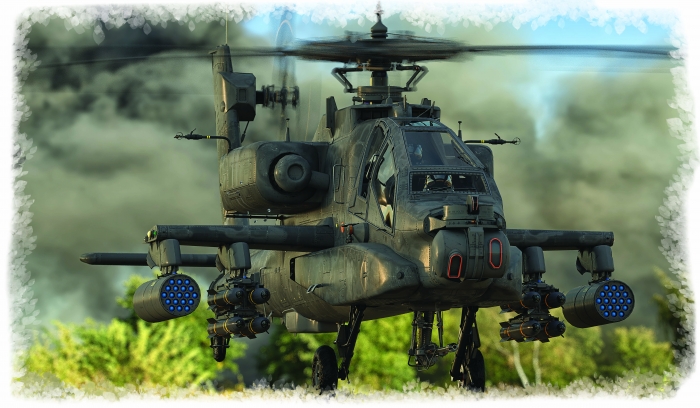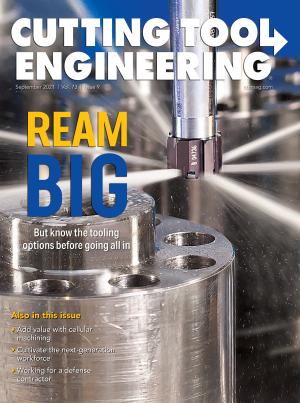Machining has been the foundation of my career since entering the workforce in 1993. I am fortunate to have had the opportunity to work in several industries, and I have had access to many different growth opportunities.
Unlike many craftspeople, I did not get my education from a structured program, such as a vocational school or an apprenticeship. I learned my trade at the machine shop that my father owned. Unlike most shop owners, Dad was not a machinist. He was a salesman who found himself with a shop. A series of unfortunate events left us short-handed with a significant backlog, forcing me to jump in. This challenging situation introduced me to a trade that quickly became a passion. I read old machining books, studied the work of experienced people and looked for opportunities to try new things.
After several years of running Dad’s shop, life led me in another direction, and I arrived at an aerospace manufacturing company as a manufacturing engineer. That is when my reeducation in machining began.
At the family shop, we made things like pump parts for dishwashers and seat parts for bass boats. The aerospace company that I moved to made high-performance components for military aircraft like the F-16, A-10 Warthog and Apache helicopter. The transition from a small shop to a Department of Defense contractor was difficult.

The transition from a small shop to a Department of Defense contractor was difficult.
Dishwasher parts are probably more complex than one might think but not by much. At the family shop, we usually worked with dimensional tolerances in the ±0.127 mm (0.005") range with an occasional dip into the ±0.0127 mm (0.0005") range. We did not know anything about geometric dimensioning and tolerancing. So the dimensional requirements of work at the shop were not very challenging.
At the new company, we made high-performance hydraulic pumps and motors for military aircraft. Operating pressures of 5,000 psi were common in many of these units, and the entire pump was sealed by mechanical fit. There were no O-rings, rubber seals or gaskets used in the assembly process. Seals were made by machining the mating components so flat that high-pressure oil could not find a gap. Flatness requirements were below ±0.001016 mm (0.00004") and had to be measured with light-emitting optics. To say my transition was challenging would be an understatement.
Adapting to GD&T was part of the challenge. At the family shop, we had old-fashioned drawings that specified a dimension with a tolerance that was not dependent on the correctness of any other feature. At the new shop, I was faced with dimensions that alone would be correct but when included in a GD&T structure were out of tolerance. In one case, I had to deal with bored holes that had correct diameters and correct locations in a single plane that would be out of tolerance when included in the GD&T dimensioning scheme. I learned to hate coordinate measuring machines because of their ability to uncover flaws that could not be detected with micrometers and calipers.
Aggravating the dimensional challenges was the rigidity of our process controls. At the small shop, manufacturing process control did not exist outside the mindset of “If it ain’t broke, don’t fix it.” Aerospace manufacturing uses very deliberate, complex and thorough procedures to demonstrate the ability of a process to deliver the required
engineering specifications.
Part of that process is first-article inspection. Once programs are written and tools are made, it is time to run the first part. At completion, there is a 100% dimensional verification of the component. Every diameter, step, hole position, radius and chamfer is inspected for correctness. Completing the FAI can take several attempts and consume many hours. Prior to aerospace work, I never really worried about stuff like a chamfer on the edge of a hole. But I quickly realized that every dimension — and there could be hundreds — had to meet the drawing requirement or else I never would get through the FAI process.
Once the component has passed FAI and the processes have been validated, the part can be released for production, which is when you may find out that a process that works on one or two FAI parts is not robust enough for production, resulting in intermittent dimensional problems.
Previously, I addressed these kinds of problems with little planning. I would adjust machine tool parameters, change the fixture or maybe buy some new tools and tinker with things until the problem was resolved. I couldn’t do that with military aerospace parts. Once the FAI process was complete with all the necessary approvals, we had a qualified process. “Qualified” is another way of saying “locked down,” and you can’t alter it. If we wanted to adjust the manufacturing process, we had to requalify it. This was less difficult than an initial FAI/qualification, but it still required paperwork to document the changes, an update of all process paperwork and another FAI to validate that the modifications did not affect downstream processes. There really was no tinkering with aerospace manufacturing processes.
Approvals are needed for everything when you make aerospace parts. The consequences of component failure in an aircraft demand very tight process controls to ensure that every possible risk has been considered and eliminated. I found this out early on when I submitted a requisition for new carbide drills to replace the high-speed steel drills that the company had been using since 1962. My manager refused the request and said the cost of requalifying would be greater than the savings from improved cycle times. Our team of manufacturing engineers used to say the toilet paper in the bathroom could not be changed without five signatures.
Moving from a small shop that made dishwasher parts to a major defense contractor was challenging, but it prepared me for future career opportunities. I learned to be better at planning a manufacturing process. I found out that process control and process change management are key elements for reducing defects. GD&T struggles taught me to build better tools and eventually appreciate the value of a CMM. Most importantly, I discovered that one seemingly small change can significantly affect a process. It was a difficult but rewarding transition.
Related Glossary Terms
- fixture
fixture
Device, often made in-house, that holds a specific workpiece. See jig; modular fixturing.
- flat ( screw flat)
flat ( screw flat)
Flat surface machined into the shank of a cutting tool for enhanced holding of the tool.
- process control
process control
Method of monitoring a process. Relates to electronic hardware and instrumentation used in automated process control. See in-process gaging, inspection; SPC, statistical process control.
- tolerance
tolerance
Minimum and maximum amount a workpiece dimension is allowed to vary from a set standard and still be acceptable.


